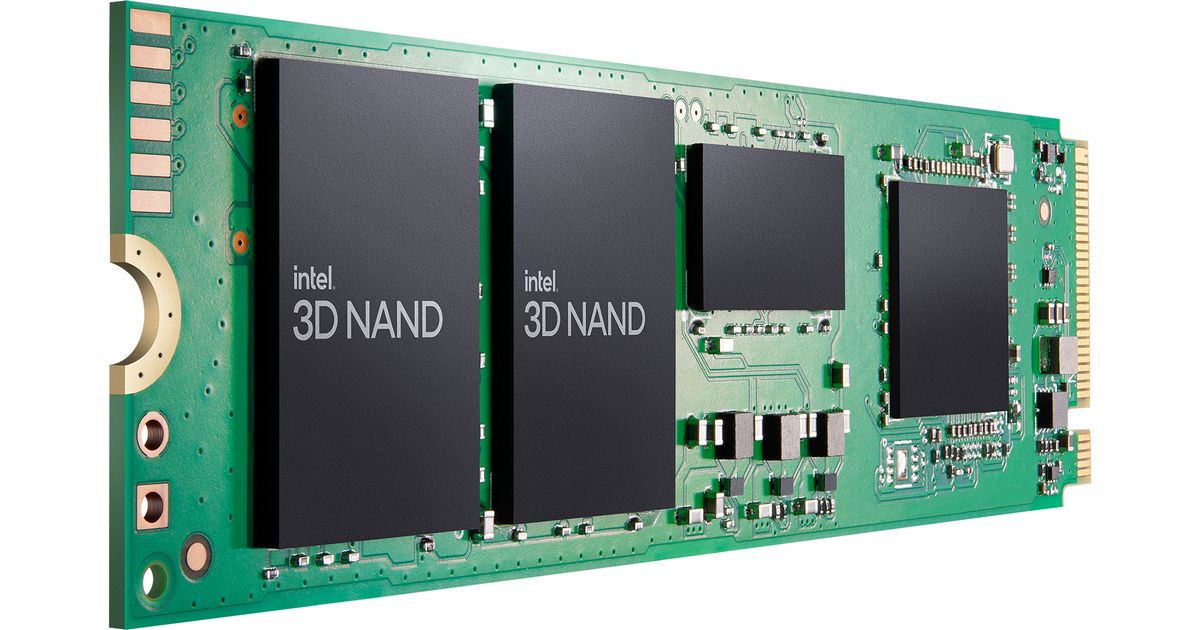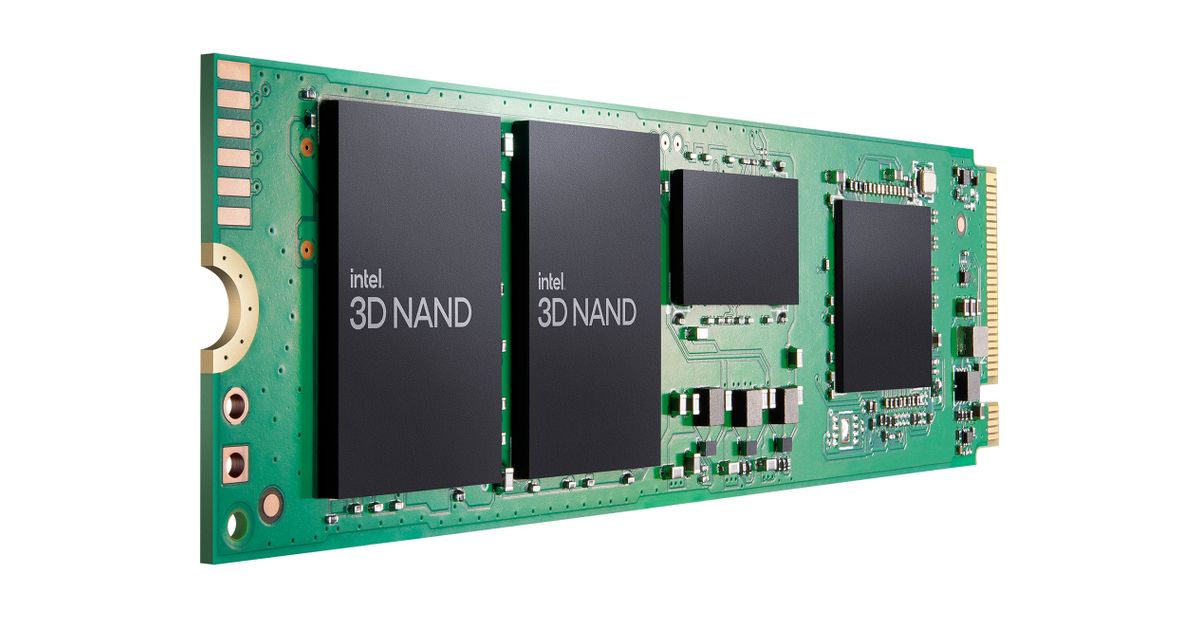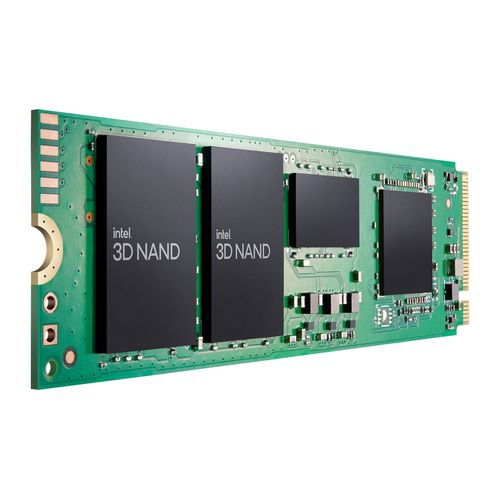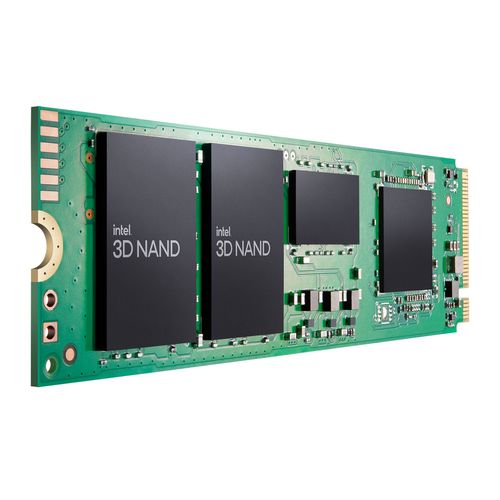For illustrative purpose only
Intel 670p M.2 2000 GB PCI Express 3.0 3D4 QLC NVMe
Intel 670p, 2000 GB, M.2
Read more...
Read more...
| Select | Supplier | Availability | Price | ETA |
|---|---|---|---|---|
| E1 | 0 | 232.48 € | Ask for availability |
Estimated delivery time of the product from selected supplier: Ask for availability
232.48 €
tk
Returns Policy
14-day money back guaranteeFlexible Payment Options
- Payment by invoice or e-invoice possible for individuals, companies and public authorities
- Payment via bank link - Coop, LHV, SEB, Swedbank, Luminor, Citadele
- Credit card payment
Pay later or in installments
Installment calculator
-
MTS Järelmaks
100 € - 10 000 € -
Liisi Järelmaks
10 € - 25 000 € -
Inbank järelmaks
100 € - 10 000 € -
LHV Järelmaks
50 € - 15 000 €
Monthly payment:
7.15 €
All calculations made on the calculator supplied on this site are guidelines only and are subject to confirmation at the time of finalising any transactions.
Product Information
| Information | |
|---|---|
| Manufacturer | Intel |
| Product code | 184612013 |
| EAN | 00735858453318 |
| Manufacturer part number | SSDPEKNU020TZX1 |
| Category | SSD kõvakettad |
| Features | |
|---|---|
| SSD form factor | M.2 |
| Memory type | 3D4 QLC |
| NVMe | Y |
| Hardware encryption | Y |
| End-to-End Data Protection | Y |
| Enhanced Power Loss Data Protection technology | N |
| SSD temperature monitoring | N |
| Uncorrectable Bit Error Rate (UBER) | < 1 per 10^15 bits read |
| TBW rating | 740 |
| Use conditions | PC/Client/Tablet |
| SSD ARK ID | 204108 |
| Harmonized System (HS) code | 84717070 |
| Storage | |
|---|---|
| SSD capacity | 2000 GB |
| Ports & interfaces | |
|---|---|
| Interface | PCI Express 3.0 |
| Design | |
|---|---|
| Component for | PC/notebook |
| Network | |
|---|---|
| Security algorithms | 256-bit AES |
| Performance | |
|---|---|
| Mean time between failures (MTBF) | 1600000 h |
| Export Control Classification Number (ECCN) | 5A992CN3 |
| Commodity Classification Automated Tracking System (CCATS) | G182471 |
| Power | |
|---|---|
| Power consumption (idle) | 0.025 W |
| Brand-specific features | |
|---|---|
| Intel High Endurance Technology (HET) | N |
| Intel® Rapid Start Technology | Y |
| Intel® Remote Secure Erase | N |
| Processor special features | |
|---|---|
| Intel® Smart Response Technology | Y |
| Operational conditions | |
|---|---|
| Operating temperature (T-T) | 0 - 70 °C |
| Maximum operating temperature | 70 °C |
| Operating vibration | 2.17 G |
| Non-operating vibration | 3.13 G |
| Memory | |
|---|---|
| Internal memory type | PCIe 3.0 x4, NVMe |
| Processor | |
|---|---|
| Processor family | Intel SSD 6 |
| Other features | |
|---|---|
| Power consumption (active) | 0.08 W |
| Launch date | Q1'21 |
| Random write (8GB span) | 340000 IOPS |
| SSD endurance rating | 740 |
| SSD shock | 1000G,0.5ms |
| Sequential reading | 3500 MB/s |
| Sequential writing speed | 2700 MB/s |
| Status | Launched |
| Random read (8GB span) | 310000 IOPS |
Product Description
Enhanced Power Loss Data Protection
Enhanced Power Loss Data Protection prepares the SSD for unexpected system power loss by minimizing data in transition in temporary buffers, and uses on-board power-loss protection capacitance to provide enough energy for the SSD firmware to move data from the transfer buffer and other temporary buffers to the NAND, thus protecting system and user data.
Intel® Rapid Start Technology
Intel® Rapid Start Technology allows quick system resumes from the hibernate state.
Hardware Encryption
Hardware encryption is data encryption done at the drive level. This is used to ensure that the data stored on the drive is secured from unwanted intrusion.
End-to-End Data Protection
End-to-End Data Protection ensures integrity of stored data from the computer to the SSD and back.
Temperature Monitoring and Logging
Temperature Monitoring and Logging uses an internal temperature sensor to monitor and log airflow and device internal temperature. The logged results can be accessed using the SMART command.
Intel® Smart Response Technology
Intel® Smart Response Technology combines the fast performance of a small solid state drive with the large capacity of a hard disk drive.
High Endurance Technology (HET)
High Endurance Technology (HET) in SSD's combines Intel® NAND Flash Memory silicon enhancements and SSD system management techniques to help extend the endurance of the SSD. Endurance is defined as the amount of data that can be written to an SSD during its lifetime.
Intel® Remote Secure Erase
Intel® Remote Secure Erase provides IT administrators a secure method for remotely wiping an Intel SSD from a familiar management console when retiring or repurposing a system. This allows for immediate re-use while saving administrative time and costs.
Enhanced Power Loss Data Protection prepares the SSD for unexpected system power loss by minimizing data in transition in temporary buffers, and uses on-board power-loss protection capacitance to provide enough energy for the SSD firmware to move data from the transfer buffer and other temporary buffers to the NAND, thus protecting system and user data.
Intel® Rapid Start Technology
Intel® Rapid Start Technology allows quick system resumes from the hibernate state.
Hardware Encryption
Hardware encryption is data encryption done at the drive level. This is used to ensure that the data stored on the drive is secured from unwanted intrusion.
End-to-End Data Protection
End-to-End Data Protection ensures integrity of stored data from the computer to the SSD and back.
Temperature Monitoring and Logging
Temperature Monitoring and Logging uses an internal temperature sensor to monitor and log airflow and device internal temperature. The logged results can be accessed using the SMART command.
Intel® Smart Response Technology
Intel® Smart Response Technology combines the fast performance of a small solid state drive with the large capacity of a hard disk drive.
High Endurance Technology (HET)
High Endurance Technology (HET) in SSD's combines Intel® NAND Flash Memory silicon enhancements and SSD system management techniques to help extend the endurance of the SSD. Endurance is defined as the amount of data that can be written to an SSD during its lifetime.
Intel® Remote Secure Erase
Intel® Remote Secure Erase provides IT administrators a secure method for remotely wiping an Intel SSD from a familiar management console when retiring or repurposing a system. This allows for immediate re-use while saving administrative time and costs.



